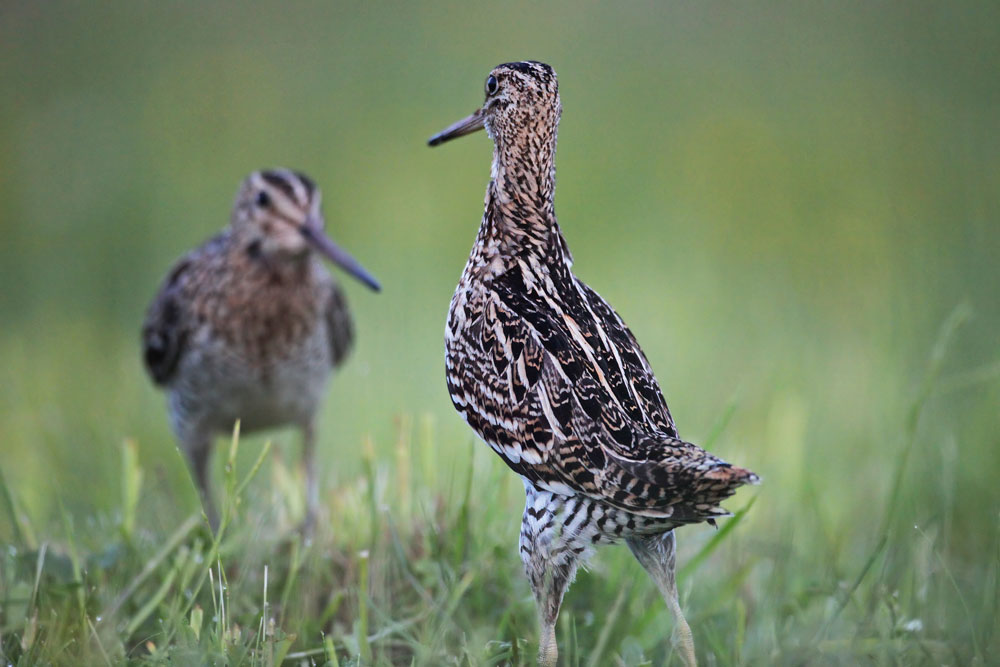 It is a medium-sized member of the family of sandpipers. When compared to Black-tailed godwits, it is much more difficult to be spotted among the grasses as well as in flight. Very similar to a Common snipe – with size (body length max. 30 cm, wingspan 46 cm) and coloration. It takes some experience to recognize these two species, and it's a good idea to consult the literature at the beginning. The Great snipe is slightly larger and has a calmer flight. Once off the ground it flies low and straight, however, making matters more difficult, a tired snipe will also move in the same manner.
It is a medium-sized member of the family of sandpipers. When compared to Black-tailed godwits, it is much more difficult to be spotted among the grasses as well as in flight. Very similar to a Common snipe – with size (body length max. 30 cm, wingspan 46 cm) and coloration. It takes some experience to recognize these two species, and it's a good idea to consult the literature at the beginning. The Great snipe is slightly larger and has a calmer flight. Once off the ground it flies low and straight, however, making matters more difficult, a tired snipe will also move in the same manner.
There is no sexual dimorphism in this species. A distinctive feature is the behavior of the Great snipe in courtship displays. Males gather on leks, there may be a dozen or even more of them – if it is an area where they occur in large numbers. In addition, each individual visits several known leks during a single spring night. During these migrations, birds cross state borders and fly several hundred kilometers between dance arenas in Belarus and Poland. These birds are a real treat for bird-watchers and their courtship behavior has been attracting tourists from Poland and abroad for many years. Unfortunately, they are extremely rare and information about leks is kept secret by ornithologists. Currently, the birds can be observed in Poland only in Podlasie and Lubelszczyzna, in the remaining areas of our country they appear ephemerally. Currently, the size of the national population is estimated to be about half a thousand males (this number is given for this species) and this represents about 15% of the EU population.
It nests in the same habitat as the above-described Black-tailed godwit and has similar food preferences.
It is a migratory bird. It winters in Sub-Saharan Africa. During PTOP's early projects, several individuals of this species received transmitters that allowed us to read their flight data. Great snipes leave the breeding grounds in August but do not fly away immediately. They may stay for a while near abundant feeding grounds and gain weight until as late as October, and these may be meadows in Polesie or high mountain pastures in Romania. After gathering supplies and with favorable weather, a bird can cover a distance of several thousand kilometers in a single jump, as one individual which covered 6800 kilometers in 84 hours of flight and reached Central Africa. In doing so, they achieve an average flight speed of over 90 km/h! This is a remarkable result, and it should be remembered that a Great snipe, when traveling such long distances, comes back from Africa and finds its old lek unerringly. There are still many details about the bird migration we do not know yet.
